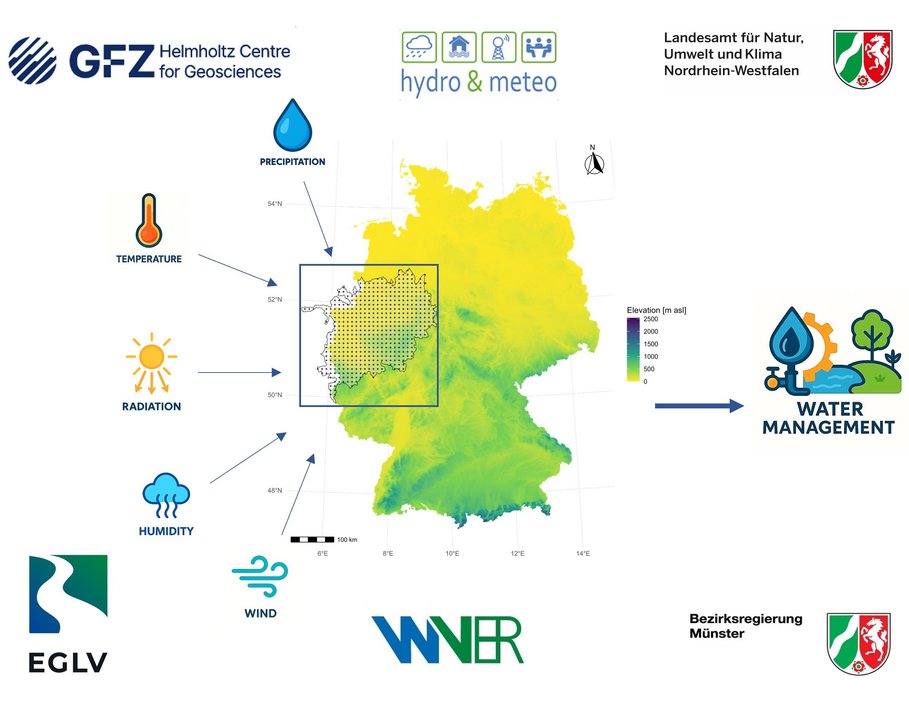Provision of extreme precipitation in NRW for current and possible future climate | StatExNi NRW
Recent trends in observed climate variables and flood discharges demonstrate that flood characteristics in Germany have already shifted due to climate change, with projections indicating continued changes in the future. A notable attribution study (Kreienkamp et al., 2021) found that the probability of the extreme precipitation event leading to the July 2021 floods increased by a factor of 1.2 to 9 due to climate change. These findings highlight the urgent need to reassess flood risk management not only under current conditions but also in anticipation of future climate scenarios. However, accurately modelling extreme precipitation and its hydrological impacts remains challenging, particularly due to limitations in the spatial resolution and simulation quality of global and regional climate models (GCMs and RCMs).
To address these challenges, two complementary approaches are being implemented in a pilot project to generate high-resolution and long-term time series of climate variables for water management applications. The GFZ’s non-stationary Regional Weather Generator (nsRWG) (Nguyen et al., 2024) simulates continuous daily climate data across NRW using a statistical model conditioned on large-scale atmospheric patternsand average regional temperature, allowing it to capture both thermodynamic and dynamic influences of climate change. In parallel, the empirical-statistical downscaling method by hydro&meteo leverages observed weather analogues to refine GCM-RCM outputs into high-resolution precipitation series (up to 5-minute intervals) for two pilot areas. These methods produce synthetic time series and spatially differentiated climate change factors for different emission scenarios and future periods (2031–2060, 2071–2100). The resulting data will support the improved design and assessment of flood protection and water infrastructure under evolving climate conditions.
The project is funded by the North Rhine-Westphalia Ministry of the Environment in cooperation with the Emschergenossenschaft / Lippeverband (EGLV) and the WVER Wasserverband Eifel-Rur.
Publications:
Guan, X., Nissen, K., Nguyen, V. D., Merz, B., Winter, B., & Vorogushyn, S. (2023). Multisite temporal rainfall disaggregation using methods of fragments conditioned on circulation patterns. Journal of Hydrology, 621, 129640. doi: 10.1016/j.jhydrol.2023.129640
Kreienkamp, F., Philip, S. Y., Tradowsky, J. S., Kew, S. F., Lorenz, P., Arrighi, J., ... & Wanders, N. (2021). Rapid attribution of heavy rainfall events leading to the severe flooding in Western Europe during July 2021. World Weather Attribution
Nguyen, V. D., Vorogushyn, S., Nissen, K., Brunner, L., and Merz, B. (2024). A non-stationary climate-informed weather generator for assessing future flood risks, Adv. Stat. Clim. Meteorol. Oceanogr., 10, 195–216, doi.org/10.5194/ascmo-10-195-2024
